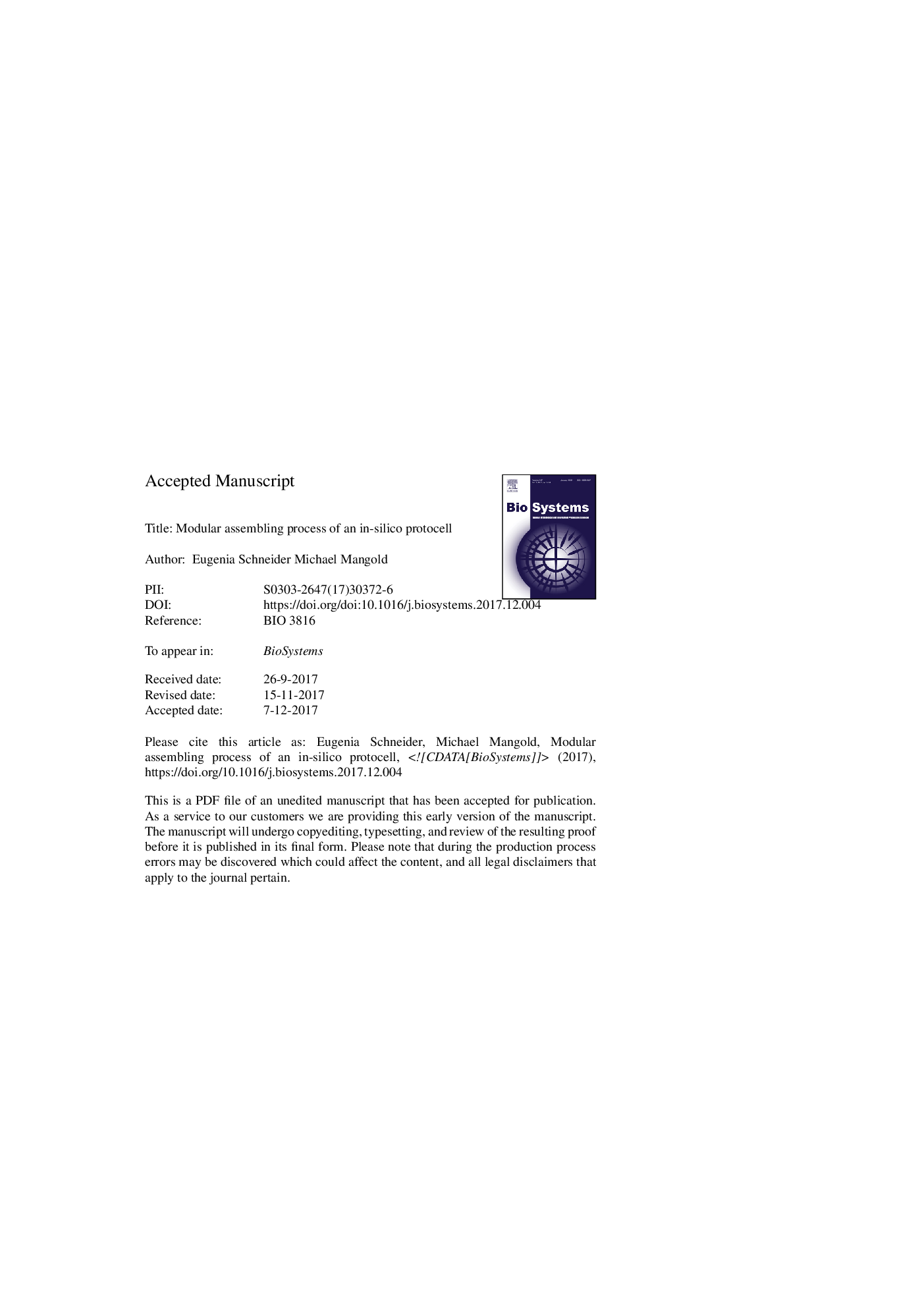| Article ID | Journal | Published Year | Pages | File Type |
|---|---|---|---|---|
| 8406505 | Biosystems | 2018 | 44 Pages |
Abstract
The bottom-up approach of synthetic biology is driven by the need for a deepened understanding of the interaction of functional modules in living or artificial systems. The hope is that the gained knowledge will help to optimize existing systems, or, as one long-term goal of synthetic biology, to build up artificial cell-like entities from single building blocks. This article focuses on a system theoretic approach to synthetic biology, and in particular on the construction of a protocell model by the modular assembling process. Different models for an in-silico protocell are described that combines experimentally validated biological subsystems with theoretical assumptions. The in-silico protocell that is characterized consists of three different functional modules: the membrane proliferating module, the membrane contraction module, and a positioning module. Additional theoretical hypotheses are tested in order to merge the module models to one protocell model with synchronously working parts. The different approaches used here for developing a protocell model could be helpful for assembling the different modules to one system in reality. Depending on the objective one wants to achieve a more or less detailed modeling approach is appropriate.
Keywords
Related Topics
Physical Sciences and Engineering
Mathematics
Modelling and Simulation
Authors
Eugenia Schneider, Michael Mangold,
